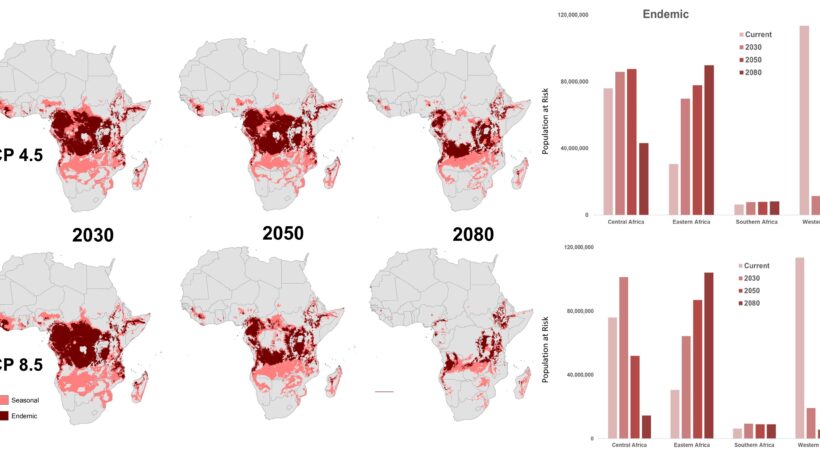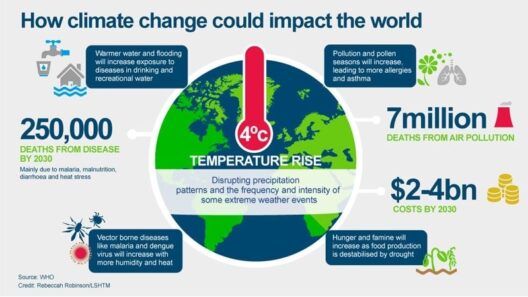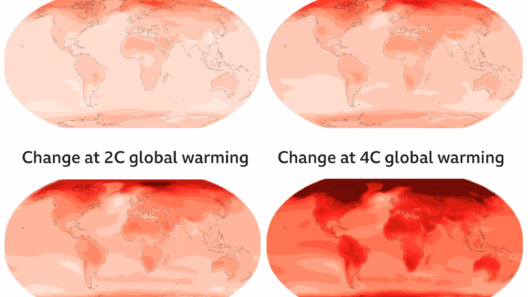As the world grapples with the ever-pressing consequences of climate change, the intricate web linking environmental shifts to public health is becoming clearer. One of the areas of growing concern is the resurgence of infectious diseases, with malaria at the forefront of this alarming trend. Malaria, caused by the Plasmodium parasite and transmitted through Anopheles mosquitoes, has long been a tenacious adversary in public health. Recent studies suggest that climate change is set to exacerbate the geographical distribution and intensity of malaria transmission in Africa, prompting a critical re-evaluation of both prevention strategies and public health policies.
Historically, malaria has thrived in tropical and subtropical regions, where warm temperatures and adequate rainfall foster the proliferation of its mosquito vectors. However, as global temperatures rise, researchers predict significant alterations in these environmental conditions, which could result in novel and unexpected outbreaks in regions previously considered low-risk. The temperature threshold for mosquito survival, reproduction, and activity ranges from approximately 16 to 34 degrees Celsius; exceeding this range could lead to rapid population dynamics and could even alter their feeding and behavior, making them more aggressive or extending their active hours.
The anticipated shifts in climate are not merely abstract projections; they have palpable repercussions. For instance, the combination of increasing temperatures and shifting rainfall patterns is creating favorable conditions for mosquitoes in higher altitudes and latitudes. This means that places in East Africa, previously deemed inhospitable for the malaria vector, could experience heightened risks. The disease’s expansion into new territories will not just threaten local health systems; it will also challenge existing vector control strategies that have been developed with specific environmental parameters in mind.
One salient factor complicating this scenario is the interplay between climate change and socioeconomic variables. In many endemic regions, poverty, lack of access to healthcare, and inadequate infrastructure compound the effects of malaria. As climate change aggravates these conditions, vulnerable populations may find themselves more susceptible to infections. Disrupted agricultural patterns due to extreme weather could lead to food insecurity and malnutrition, further undermining immune responses and increasing the risk of severe malaria cases. The relationship between climate and health is thus emerging as a multifaceted paradigm wherein environmental degradation exacerbates human vulnerability.
Moreover, malaria’s resiliency is bolstered by the continuous evolution of the parasite and its vectors. Different strains of Plasmodium have exhibited varying responses to environmental changes, including climate fluctuations. Adaptive strategies employed by the malaria vector—such as alterations in breeding habits or changes in habitat preferences—pose significant challenges to existing containment measures. The possibility of increased resilience in the face of climate change necessitates innovative vector control strategies, using technology and biological interventions to stay ahead of these changes.
The technological realm also provides ground for optimism. Current methods, such as insecticide-treated nets and indoor residual spraying, have had proven efficacy, but they require constant calibration in the face of newly evolving mosquito populations. Research into sustainable alternatives, like genetically modified organisms or the deployment of naturally occurring pathogens targeting mosquito populations, could herald a new era in malaria control. Moreover, advancements in geographic information systems (GIS) and remote sensing technology offer enhanced capabilities to map risk areas and predict potential outbreaks by monitoring climatic variables, thus facilitating more proactive public health responses.
Education and community engagement play crucial roles in these interventions as well. Awareness-raising campaigns can significantly alter community behaviors regarding malaria prevention, particularly in terms of utilizing protective measures. Early recognition of symptoms and prompt treatment are vital, especially as the risk of malaria expands into new territories. Public health messaging must adapt to emphasize the increasing likelihood of disease spread in unfamiliar areas, urging communities to remain vigilant.
International collaboration is also imperative. Countries must work together to share data, research findings, and resources. Malaria knows no borders, and its resurgence can be curbed more effectively through a unified global response. Transnational efforts, such as the Global Fund to Fight AIDS, Tuberculosis, and Malaria, exemplify how coordinated global initiatives can mobilize resources and expertise to address public health crises exacerbated by climate change.
The intersection of climate change and the resurgence of malaria underscores the urgent need for comprehensive policy frameworks that embrace a One Health approach. By integrating ecological, human, and animal health perspectives, policymakers can strengthen resilience against the multifarious threats posed by a changing climate. Preparing for the inevitable shifts in malaria transmission dynamics necessitates adaptive governance, resource allocation, and a steadfast commitment to research and development.
As the contours of our interactions with the environment evolve, so too must our understanding and response to diseases like malaria. The challenges posed by climate change can serve as a clarion call, urging us to revise our strategies and enrich our knowledge of disease ecology. By embracing innovative solutions, fostering global partnerships, and empowering communities, we can not only mitigate the threat of malaria but also pave the way for a healthier, more resilient future in an era defined by environmental uncertainty and change. The stakes are undeniably high, but so too are the opportunities for transformative action.








